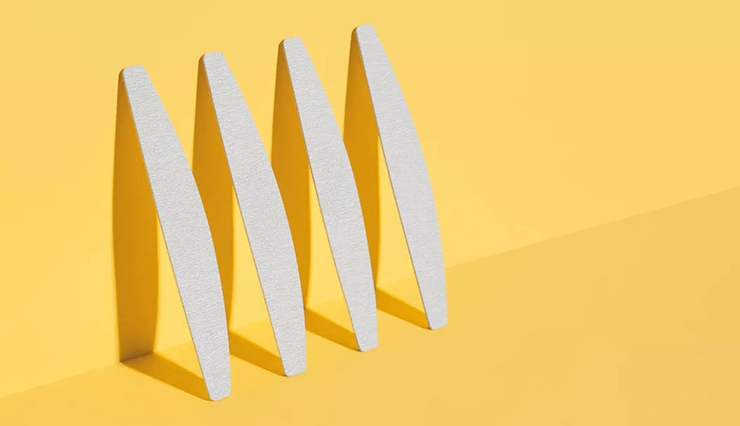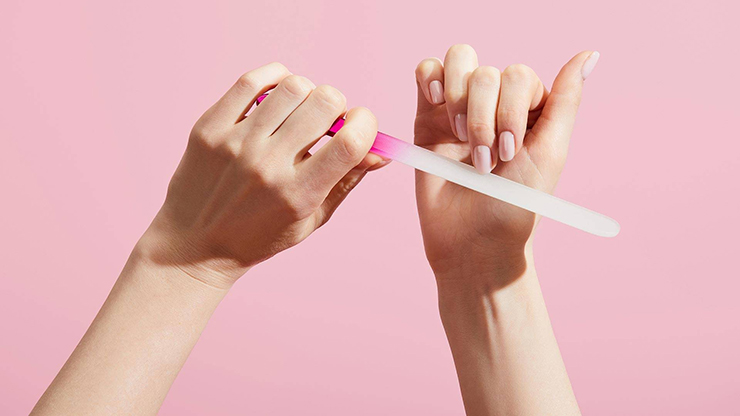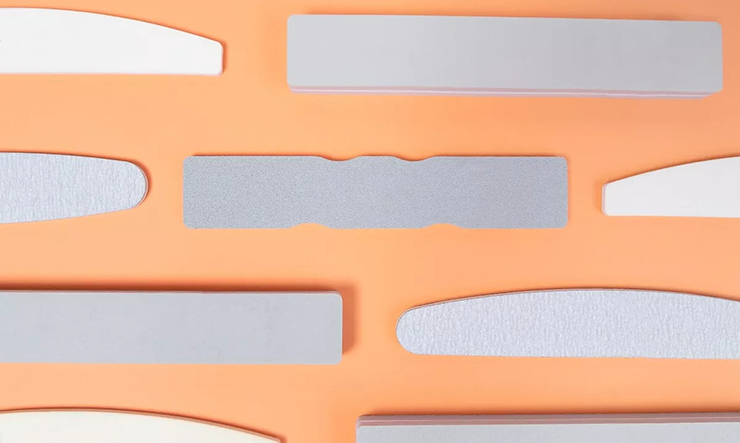
How to Choose a Nail File – The Fashiongton Post
To choose the right nail file for natural nails, you need to know some subtleties, for example, pay attention to the abrasiveness of its coating. In this article, The Fashiongton Post will help you figure out which nail file is good for your nails, what types of nail files exist, and how to use them correctly.
Types of nail files
The abrasiveness (hardness) of a nail file is the main criteria to have in mind when choosing a tool for home use. The numbers on the packaging (usually measured in “grits”) will tell you about the rigidity of the nail file. Usually it shows the number of grits per square centimeter of the tool’s surface. For example, a high amount of grit indicates fine coating, which means that the nail file will be soft, and vice versa.
- Abrasiveness 60/80 is the lowest, which means you can use such a nail file to shorten the length of artificial nails. To avoid delamination, a nail file with abrasiveness up to 80 grit is not used on natural nails;
- Abrasiveness 100/180 is also suitable for use on artificial nails only, because such a hard tool can harm natural nails;
- Abrasiveness 180/240 is the perfect solution for natural nails. These are nail files of medium hardness, so you can file your nails with high quality, giving them a shape without damaging the nail plate. Such nail files are universal, which means they are suitable for all nails. Choosing this level of abrasiveness will never be a mistake;
- A nail file with the abrasiveness of 240-400 grit is used by manicure and pedicure masters before applying nail polish and nail gel on the nail plate;
- A tool with an abrasiveness of 400/800 can be used to polish nails, as well as it will be good enough for thin nails prone to delamination;
- A nail file with the abrasiveness of 1000+ can only be good for nail polishing, to give your nails a glossy and shiny look.
What to look for when buying a nail file
Once you have determined your desired level of abrasiveness, you can select the material from which the nail file is made: metal, glass, paper-based with an emery coating, ceramic or wood.
Metal (sapphire, diamond) nail files are the most popular, but they must be used with caution, as they can damage nails due to their hardness — there is a high risk of microcracks and burrs. Metal nail files were very popular in the past when that was the only material they were made from.
A glass, laser or crystal nail file will last you longer than a metal one, they do not harm nails, and are easy to clean. The cost of such a tool will also be much higher.
Paper-based nail files are the cheapest, but this does not mean that they are bad, rather short-lived (up to 6 months of active use). Paper nail files can be used to file both natural and extended nails.
Corundum nail files are easy to confuse with paper ones, but they are much better in quality.
If you need to not only file your nails, but also take care of removing the hardened skin around them, try using a ceramic nail file.
For polishing nails, you may not just use a nail file with an abrasiveness of 1000 or more grits, but also a nail file covered with rubber, suede or leather. In general, any dense but soft material will do. For polishing nails, you may use a buff, which is a bar with an abrasive surface on two or four sides.
Professional nail salons, mostly use disposable nail files, or metal nail files with removable abrasive pads which are sticked to a nail file and are thrown away after use.
Modern nail files have an attractive appearance and are made in various sizes and shapes. Fashionistas often choose a nail file simply for their look, not paying attention to quality or functionality, but this is a big mistake.
Shapes of nail files
- rectangular (can handle any nails, of course if you selected the right level of abrasiveness);
- oval (used to align the nail plate, to give the nails a shape and shorten the length);
- boomerang-shaped (good for filing extended nails, as well as in the cuticle area);
- banana-shaped (to align the nails along the edges and delicately round the corners).


